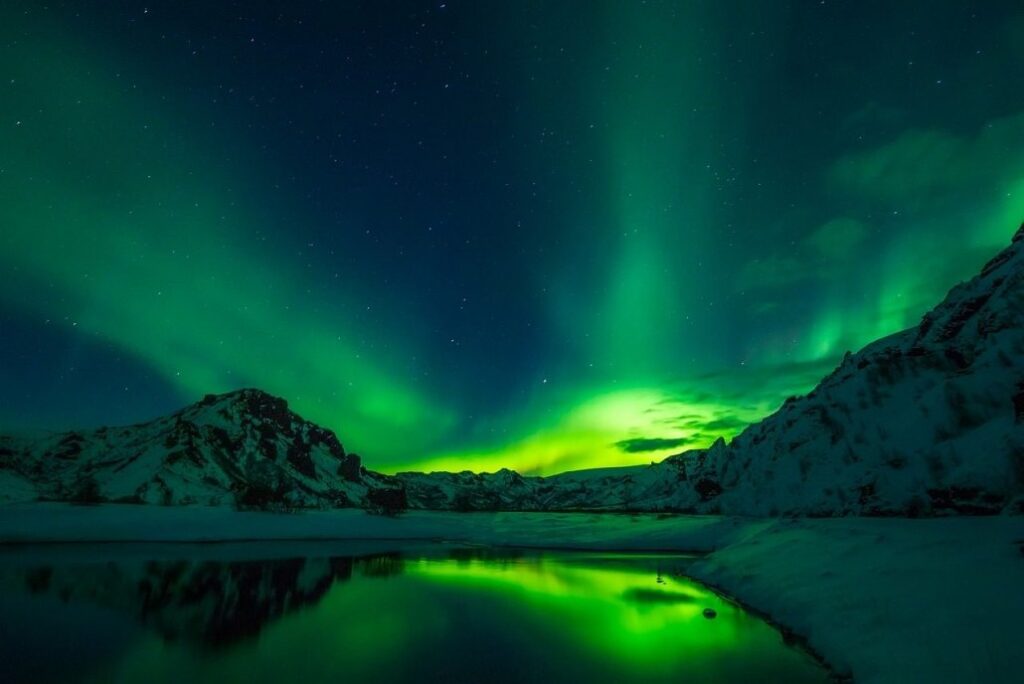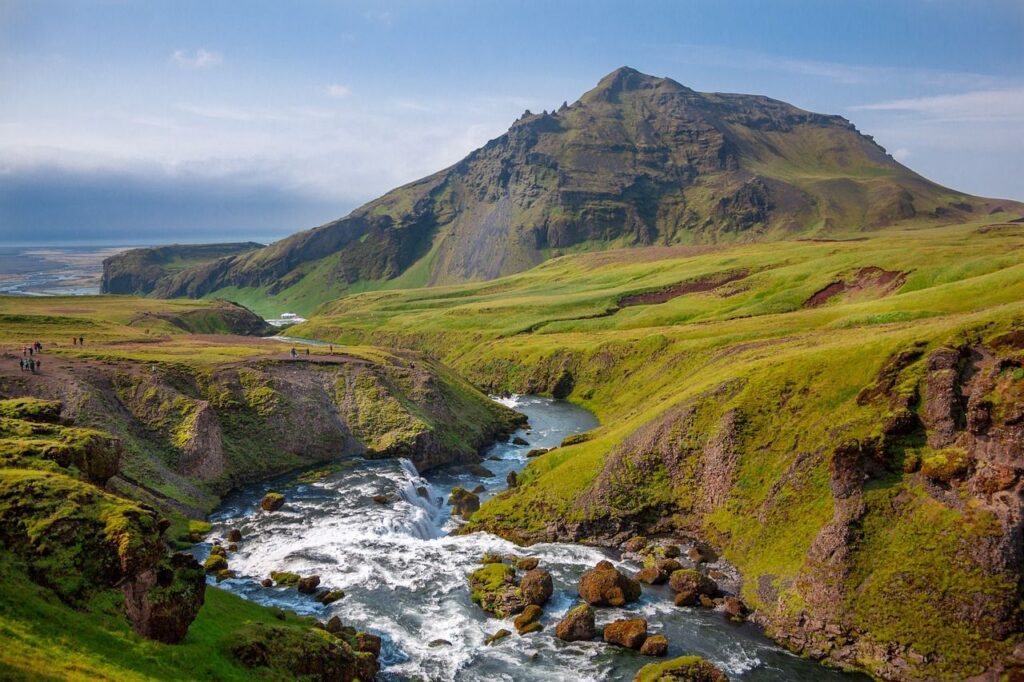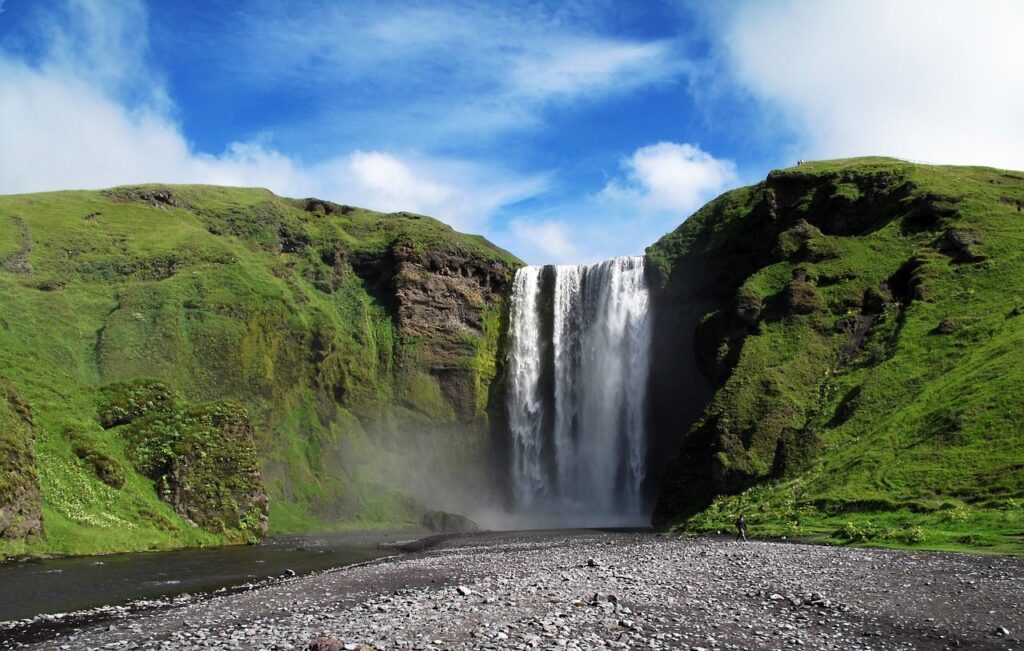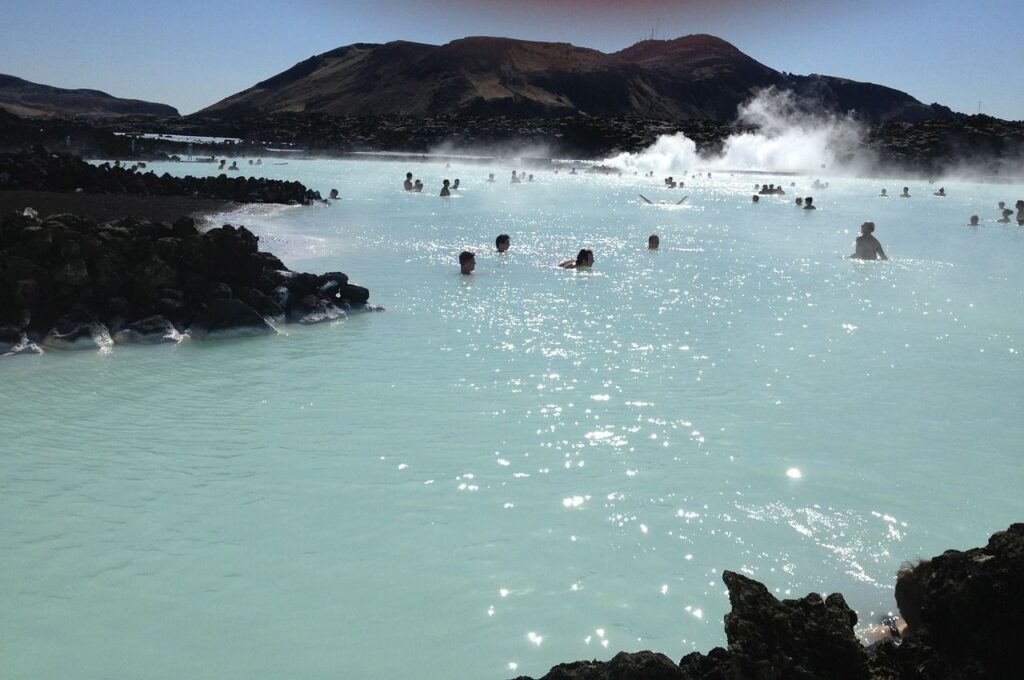
Iceland is currently one of the world’s most popular destinations for travellers, with a stark rise in visitors within the last decade. Thanks to a myriad of routes flying in and out of the country and an abundance of activities to get involved in once you get there, there’s now no limit on visiting at any given time of the year. The main draw, however, has to be the nation’s absolutely stunning landscapes; diverse, eclectic and beautiful as they are.
While some things remain universally true (for example, the fact that Iceland remains one of the most expensive places to visit in the world), a visit in summer will yield a different experience than one in winter, just as a visit in spring will highlight other features of the country to those you’ll see in the autumn. We’ve broken down the best times to visit by season.
As you might imagine, visiting Iceland in the winter makes for an incredibly cold experience. However, things aren’t actually as bad as you think, and the country is in no way bleak! On average, you should expect temperatures ranging from -1°C to 4°C, although things do from time to time get more extreme
Obviously, snow is typically part of Iceland’s winter magic, so it goes without saying that you need to arrive prepared to wrap up warm. Packing thermals will be essential, particularly because the majority of the most popular winter activities take place outdoors.
If the idea of standing around in the cold worries you a little, the lights will soon warm you up. Although technically impossible; we’re yet to hear of anyone who could resist the incredible allure of the northern lights and the fire they tend to ignite in their witnesses’ hearts.
The winter in Iceland is dark the majority of the time, and so you will have very few daylight hours. Don’t panic – in most other countries, this might seem a nightmare, but in Iceland, it’s a blessing. The aurora borealis (or aforementioned northern lights) tend to be out in their full glory at this time of year, particularly around the winter solstice at the end of December, when you’ll have around 21 hours or more of darkness and therefore a heightened chance of seeing them!
Photographers can have a great time during the winter. If you’ve got a keen eye for landscape photography, don’t forget to pack your camera! Due to the fact that there are some days where it doesn’t get fully light at all, you can take advantage of conditions known as the “golden hour”, where the sun only just peaks over the horizon and makes for interesting light conditions.
If you want to take part in excursions during the winter, you can, but you must plan ahead. Some roads may well be impassable, with driving conditions somewhat of a challenge. For those who would prefer the comfort of an organised tour (or even a private driver) this can be arranged.

In the winter, one might enjoy activities such as glacier hiking, visiting an ice cave or even snowmobiling—there’s so much to get involved with! Of course, the Blue Lagoon is an absolute bucket-list visit, and the good news is that the winter weather will not prevent you from going in. Despite this, the parts of your body that won’t be in the water will be exposed, so wearing a hat is recommended. If you want to whale watch, it’s not the “peak” season for this, but you can still do it, but you’ll be given a thermal suit!
Finally, a visit during the winter will mean that you’re in the country for Reykjavík’s Winter Lights Festival. The capital is illuminated and completely alive with coloured lights, the arts, and plenty of locals as well as tourists. The celebration honours the winter itself, but gives thanks for the days ahead where yet more light will finally come.
There really isn’t a best time to visit Iceland, because everyone who desires to travel there will have individual hopes for the country that are entirely unique to them. In saying this, the spring is a popular time and the general consensus is that it’s a brilliant time for your Icelandic experience.
Every day, the days start getting that little bit longer and in turn the snow from the winter thaws, exposing the lush greenery of the nation’s landscape that was hidden just weeks before. You can expect temperatures anywhere from freezing (at the start of the season) to around 10 or 11 degrees Celsius by May. Don’t cast aside those warm clothes just yet. You’ll need rainproof gear in addition to thick jumpers, but try to layer up, because you’ll have some warmer days as well.
Spring is also a marvellous time to see Iceland without such big crowds, such as those that are typically expected over the summer months. There are fewer people, but also fewer sunny days—but this still makes for a great trade off if you want to avoid things being sold out.
Whether you’re a wildlife photographer or merely an enthusiast, arguably this is one of the best times of year. Puffins return from their adventures after migration, and you can spot them along the coast. This is also a wonderful time of year for whale-watching, so be sure to find yourself out on a boat. You’ll also find the lambing season gets well underway around this time as well, which can be quite a sight particularly for city-dwelling children.
Looking for the northern lights? Don’t worry, you might still be in luck. There is usually an opportunity to see them up until around early April. However, there is never any guarantee, but the longer you stay, the more likely you are to be fortunate enough to catch a glimpse.

Driving at this time of year is a dream, particularly on the 1,300 km Ring Road which loops around a large portion of the island. You’ll need a week to happily cover all that ground, but it’s absolutely worth it and you can camp as you’re going around.
There’s simply so much to do in the Spring in Iceland, particularly if you’re a fan of the water. Try everything from chasing waterfalls to swimming in the Blue Lagoon or Myvatn Nature Baths, or even jump into a kayak. If you get in quick, towards the start of spring, you might even be able to join in on the last of the glacier walking expeditions or snowmobiling sessions of the season. Or, if you’re into golfing or riding, this is a great time to do both as well.
Alternatively, if you’re curious about local festivals and events, try out the Vaka Folk Festival, Aldrei For Eg Sudur or Tectronic—a must for music fans!
Oh, to be in Iceland over the summer. This is a wonderful time to visit the country, but unfortunately, the secret is out! While you won’t ever be short of things to see and do around this time, everyone else will be right there with you. It’s peak season, which means that popular attractions sell out quickly, and the already-expensive prices tend to rise.
In terms of the weather, you’ll cope just fine. It’s relatively mild (for a country in the Arctic Circle, anyway) and so you don’t really need to worry about wrapping up too much. Temperatures tend to hit the early teens (Celcius), but it’s an idea to prepare for just about anything because the lows sit around the nine mark. You’ll definitely need long sleeves for the most part!
One of the main draws of visiting the nation at this time of year is because of the seemingly eternal sun. There’s something pretty special about the summer solstice and the weeks leading up to and following it, because you’ll typically see daylight for more than 21 hours. Just be sure to pack an eye mask so that you can sleep!
Photographers looking for natural light will love the fact that there’s midnight sun (and then some), but this probably won’t go down too well for folks simply hoping for their chance to see the northern lights. If this sounds like it would be a disappointment to you, you’re probably better off coming at another time. While there’s certainly a slight possibility, it’s really not that likely to happen.
Despite missing the aurora borealis, there are so many natural sights to discover, and the country is your oyster. Get out to explore the great outdoors taking part in a myriad of activities, from driving the Ring Road or Golden Circle, to visits to the black sand beaches and more. You can even snorkel or dive between the Eurasian & American tectonic plates at Silfra; so you’ll quite literally be straddling the mesmerising, clear waters between two continents.

Of course, Iceland is known for its geysers, and these are constantly erupting with geothermal activity, and so they’re a sight to behold. They make for excellent stops on any road trip. Don’t forget to stop at the various lagoons as well, with the Blue Lagoon sure to be the envy of your friends, but also Secret Lagoon as well. The list is never-ending though, with volcano hiking, kayaking, the puffins and so much more to take advantage of.
There are some events over summer too. National Day occurs on June 17th, commemorating the day they became The Republic of Iceland in 1944, cutting their previous ties with Denmark. The Great Fish Day in August is a paradise for fish fans, the Bræðslan music festival makes for an amazing day out in July and Gay Pride and Culture Night in Reykjavík highlight the nation’s impressive progressive attitudes in August.
One of the most enchanting things about Iceland is the fact that each season is entirely different to the one before. The country is perhaps at its most colourful during the autumn, with foliage in vibrant reds, yellows and oranges settled all over the floor. Among the leaves, green moss begins to poke through, particularly close to the lava fields. The snow is coming, but for now, everything is calm.
Towards the beginning of the season, you can still partake in an array of summertime adventures. The crowds typically disperse somewhat, while the prices tend to be a little more favourable. Temperatures tend to be much cooler, with temperatures dipping as low as 1°C. It goes without saying that in such temperatures, you’ll need your hat and gloves, because you should always be prepared.
If you’re dreaming of seeing the northern lights, you may well be in with a chance. If you’re prepared to go to bed late (or get up early), you may find the opportunity in among the darkness. The days are slowly drawing shorter leading up to the winter, and so perhaps look at November for a real shot.
You can still embark on a multitude of day trips or even road trips during the autumn, such as the Blue Lagoon, which really can be enjoyed at any and all times of year. In fact, you can swim in as many pools and hot springs as you like in comfort at this time of year.

The Golden Circle still makes for a brilliant drive, and along your route you might be lucky enough to see the locals going about their business in preparing for the harsh winter. A “round up” is where farmers begin to herd their sheep and horses before the winter starts, to gather them all together.
Music festivals still go on into the autumn, with Iceland Airwaves bringing in a variety of acts to perform in November from all over the globe. You can also attend the Reykjavik Film Festival, showcasing the best in world cinema as well.

SIGN UP